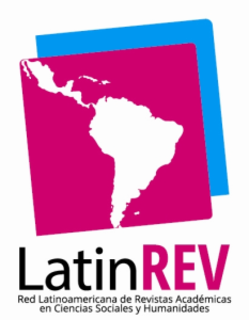THE TEACHING OF GEOGRAPHY IN CONTEMPORARY TIMES AND THE TEACHING PRACTICE FOR AWAKENING THE CREATIVITY
DOI:
https://doi.org/10.26512/2236-56562017e40100Keywords:
Geography, Creativity, Teaching-LearningAbstract
The teaching of geography in the current context, requires a series of assignments that go beyond the mere transmission of knowledge. From this premise, we consider the following question: How to stimulate creativity in teaching practice in contemporary School Geography? To occur the construction of knowledge is necessary to refl ect on the process of teaching and learning considering creativity in order to increase the participation of students and enhance their skills. Thus, this paper, theoretical nature, aims to discuss, from authors like Barreto (2007), Lubart (2007), Cavalcanti (2010, 2008) and Straforini (2004) on the development of geography as a science and, as school discipline, from possibilities of enhancing creativity in the classroom, based on refl ections on the challenges of contemporary geographic education and the opportunities arising from creative processes. Considers that it is up to the teacher instigating student development through strategies that consider your active participation, aiming more attention, interaction and awareness of Geography lessons. This process requires teacher’s creativity, innovative and up-to-date methodologies, readiness to innovate, exchanging experiences, sharing networks, use of technological resources, theory and practice, integrated activities that consider the reality of the student. In order to develop the refl ections article proposals is structured in three stages, bringing fi rst a brief review of the constitution of geographical science and the challenges of School Geography in the contemporary world; secondly, the debate is about creativity in teaching and learning in Geography and fi nally makes some refl ections in defense of stimulating creativity in geography classes, as their buildings to learning extend the human formation and stimulate diff erent dimensions of being, turning the students and, in a sense, making them more attentive, participatory and sensitive.
Downloads
References
ALMEIDA, P. C. de; BIAJONE, J. Saberes docentes e formação inicial de professores: implicações e desafi os para as propostas de formação. Revista Educação e Pesquisa, v. 33, n.2, p. 281-295, maio/ago. 2007.
ANDRADE, M. C. de. Geografi a: ciência da sociedade. Recife: Ed. Universitária da UFPE, 2008. 143 p.
BARRETO, M. O. O papel da criatividade no ensino superior. In: Diálogos & Ciência. Revista da Rede de Ensino FTC. Ano V, n. 12, p. 1-13, dez. 2007.
CARACRISTI, I. FONSECA, V. Os clássicos da geografi a e suas contribuições para formação de professores no curso de Geografi a da Universidade Estadual Vale do Acaraú – UVA (Sobral-CE/Brasil). Revista Geográfi ca de América Central. Número Especial EGAL, 2011- Costa Rica II Semestre 2011, pp. 1-14.
CAVALCANTI, L. Geografi a, escola e construção de conhecimentos. 16. Ed. Campinas, São Paulo: Papirus, 2010. 192 p.
CAVALCANTI, L. A geografi a escolar e a cidade: ensaio sobre o ensino de geografi a para a vida urbana cotidiana. São Paulo: Papirus, 2008. 190 p.
CAVALCANTI, A. P. B.; VIDIANA, A. G. Fundamentos históricos da Geografi a: contribuições do pensamento fi losófi co na Grécia antiga. In:
GODOY, P. R. T. de. (Org.). História do pensamento geográfi co e epistemologia em Geografi a. São Paulo: Cultura Acadêmica, 2010. p. 11-34.
GAUTHIER, C. Clemont Gauthier, MARTINEAU, S; DESBIENS, J; MALO, A. Por uma teoria da pedagogia: pesquisas contemporâneas sobre o saber docente. 2. ed. Ijuí: Editora Unijuí, 2006. 480 p.
LUBART, T. Psicologia da criatividade. Tradução de Márcia Conceição Machado Moraes. Porto Alegre: Artmed, 2007. 188 p.
MIRANDA, S. de. Professor, não deixe a peteca cair!: 63 ideias para aulas criativas. Campinas: SP: Papirus, 2005. 122 p.
MORAES, M. C. O paradigma educacional emergente. Campinas, SP: Papirus, 1997. 240 p.
MOREIRA, R. Para onde vai o pensamento geográfi co?: por uma epistemologia crítica. 2. ed., 1. reimpr. São Paulo: Contexto, 2012. 167 p.
NASCIMENTO, A. L. do. Em torno do conhecimento geográfi co. In: ARAUJO, L. M. de. (org.) Geografi a, Espaço, tempo e planejamento. Ed. UFAL, 2004. p. 25-42.
PONTUSCHKA, N. N. PAGANELLI, T. I. CACETE, N. H. Para ensinar e aprender Geografi a. 3. ed. São Paulo: Cortez, 2009. 383 p.
SOUSA, O. C. de. Aprender e ensinar: signifi cados e mediações. In: TEODORO, A. VASCONCELOS, M. L. (org.) Ensinar e aprender no ensino superior: por uma epistemologia da curiosidade na formação universitária. 2. Ed. São Paulo: Mackenzie; Cortez, 2005. 124 p.
STRAFORINI, R. Ensinar Geografi a: o desafi o da totalidade-mundo nas séries iniciais. São Paulo: Annablume, 2004. 188 p.
VESENTINI, J. W. Sociedade e Espaço. São Paulo, Ática, 1998. 320 p.
Downloads
Published
How to Cite
Issue
Section
License

This work is licensed under a Creative Commons Attribution-NonCommercial-ShareAlike 4.0 International License.






